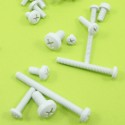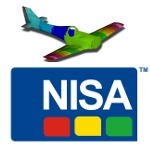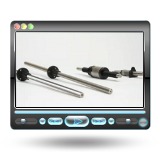| August 28, 2012 | Volume 08 Issue 32 |
|
 | New Line of Phillips Pan Machine Screws
Micro Plastics has added a new line to their inventory of 250 million parts! The Phillips Pan Machine Screws are molded in tough, resilient, and corrosion-resistant Nylon 6/6 material. Thread sizes included are: 4-40, 6-32, 8-32, 10-32, 1/4-20 and 1/4-28. Available in 25 standard lengths ranging from 3/32 in. up to 3 in., Micro Plastics also offers an extensive line of machine screws, including head styles such as Binder, Binder Combination, Fillister, Hex, Pan, Round, Socket, Flat, Oval, and Thumb Screws, as well as Studs, Grubs, and Flat Head Wing Screws.
Click here for more info. |
| | Feature articles | LED Materials: Polycarbonate stays cool in a hot market
While market demand for LEDs is white hot, overheating is a significant obstacle for lighting designers and manufacturers. Bayer MaterialScience recently launched a new grade of thermally conductive plastic to help lighting manufacturers overcome limitations of other materials (like aluminum) and meet consumer demand quickly and cost effectively.
Read the full article. |
|
 | Mike Likes:
Solve problems with up to 100 million elements
Cranes Software has released NISA Version 18, an engineering analysis software tool for structural, thermal, fluid, and electromagnetic applications. This version offers streamlined and expanded pre- and post-processing capabilities, supports larger models, and features a new "seepage" analysis feature - plus support for design challenges with 100 million elements. NISA has been an engineering favorite for more than 35 years. It is one of the most comprehensive engineering analysis software solutions available, created to address challenges in the automotive, aerospace, energy and power, civil, electronics, and sporting goods industries.
Click here to learn more. |
| | Videos+: Technologies and inspiration in action | Lead screw vs. ball screw technology
Jeff Johnson, Thomson screw product engineer, says ball screws and lead screws can sometimes be used in the same applications. Typically, ball screws are used in industry applications that need a lot of load or life, while lead screws are used in smaller, lighter-duty applications. Lead screws, however, are highly customizable with the ability to interchange leads, sizes, and nut configurations quickly. Watch this video to learn more differences.
View the video. |
 |
|
|